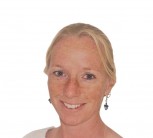The large numbers of southern right whales that usually visit the South African coast have been in dramatic decline since 2010. Research conducted by the University of Pretoria (UP) has shown that many lack the energy to do so and that female whales are calving less often.
“We have seen a huge drop in numbers along our coast, which includes females with calves, males, resting females, receptive females – so-called ‘unaccompanied adults’ – and juveniles,” says Dr Els Vermeulen, research manager of UP’s Mammal Research Institute Whale Unit.
Whales are capital breeders, meaning they feed for one half of the year and fast during the other half. The success of reproduction depends on the success of feeding. Also, migration is energetically costly. “We think there might be something wrong with their feeding,” says Dr Vermeulen, “and that they may not have the energy to migrate, or to maintain their pregnancies.” Southern right whales calve every three years, but according to the data, this has shifted to every four to five years.
Data from the 1990s compared to 2015 to 2019 also shows a drastic shift northward in foraging behaviour. “It looks like the whales are trying to compensate for a change. If the foraging was successful, they would not have changed their behaviour.”
Southern right whales forage in a vast region in the southern Indian and Atlantic Oceans, mainly on krill and sometimes on copepods, the latter being lower in protein content. Dr Vermeulen says there could be a large ecosystem change in sub-Antarctic waters. These whales usually arrive in South African waters between July and the beginning of December.
While the whales are trying to adapt, it seems they are not being successful, because pregnancy rates have dropped. “The adaptation is not sufficient at this point,” Dr Vermeulen says. There was a peak in calves in 2018, but she says, those were the females who should have given birth in 2016 and 2017. “This year there were very few whales to be seen.”
Pregnant females are motivated to migrate to the South African coast to give birth because the waters are shallow and there are not many predators. But they need to expend energy to travel. The rest of the whales will not migrate if they don’t have the energy, which is what is happening. “We are seeing only 20 to 30 unaccompanied adults, when we should be seeing 300 to 400. We don’t know where they are if they are not migrating to South Africa.” Next year satellite trackers will be attached to some of the whales to monitor where they are in fact going.
Drone images taken of whales help experts to identify individuals and calculate body volume estimates. Blubber thickness is an indication of the animal’s energy reserves. Compared to aerial photographs taken in 1988 and 1989, recent data shows that whales in the late 1980s had nearly three times more blubber than those of today. “Any mammal that is too skinny will not ovulate, fall pregnant or maintain its pregnancy,” says Dr Vermeulen.
There are more than 6 000 whales in the South African population. Only females are identified. Pictures are taken of the “white spots” on their heads, which are actually callouses populated by whale lice. These patterns are individual to each whale; software identifies the specific whale.
“Southern right whales are slow to reproduce, and the population is back to only 30% of the pre-whaling days of 1935,” explains Dr Vermeulen. “The environment is changing at such a rate that whales might be struggling to cope with it. If it is an issue of dolphins being caught in fishing nets, even though it is difficult to change, you can talk to fishermen. But what do you do if it is climate change? It is worrying, and is it going to get worse for them?”
Humpback whales migrate further south, closer to the Antarctic than southern right whales. Since 2011, experts have noticed what is called super-feeding groups off the west coast of South Africa. “It is basically a snack on their way during the migration south,” says Dr Vermeulen.” They are seen during October, November and sometimes early December. Humpback whales calve around the coast of central West Africa and on the eastern coast of southern Africa, past Mozambique.
Super-feeding could be related to an upwelling of krill in the Benguela current. It is the largest feeding aggregation of whales outside the Antarctic; however, it is not the normal feeding area of humpback whales.
Experts have never seen calves during these super-group feedings. The formation of the groups are unique: more than 200 to 300 very tightly packed whales feeding. Just like southern right whales, they feed on krill, but at different depths and they use other strategies to feed, which is why one does not see the two species together.
Click on the gallery in the sidebar to see some pictures of the whales.
Dr Els Vermeulen
December 7, 2020

Dr Els Vermeulen has been a researcher at the University of Pretoria (UP) since her postdoctoral appointment in 2015. A Belgian national, she did her undergraduate studies at the University of Antwerp.
In 2017, she took the reins as research manager of the Whale Unit at UP. The unit is part of the University’s renowned Mammal Research Institute (MRI) and is an internationally established whale and dolphin research hub. “Considering the unit’s extensive knowledge base, I feel fortunate to be able to lead its work forward,” Dr Vermeulen says.
The Whale Unit was established in 1985 and has become a globally recognised leader in cetacean (whales, dolphins and porpoises) sciences. Researchers there investigate the ecology, population dynamics and behaviour of cetaceans from southern African waters into the Southern Ocean, with the principal objective of providing knowledge that will promote their conservation.
“The Whale Unit has a database on whales and dolphins that spans over 50 years,” Dr Vermeulen says. “These long-term databases on large mammal species are unique in the world, and provide a critical tool to study long processes such as climate change and its effect on wildlife. Making use of these databases ensures that they continue to grow, and allows me to assist in gaining a better understanding of anthropogenic impacts on the marine environment.”
Over the past 36 years, the unit has built a wealth of expertise, considerable long-term intellectual property and well-established knowledge bases, making it the most established cetacean research group in Africa. Being able to continue with this legacy gives researchers at the unit the opportunity to make a significant contribution to whale and dolphin conservation and management in a broad geographical region.
In terms of cross-faculty research, Dr Vermeulen collaborates with a UP genetics laboratory headed by Prof Paulette Bloomer, as well as the Department of Geography, Geoinformatics and Meteorology.
She regards the Whale Unit’s most recent research – which has shown the effects of climate change on the health, reproductive success and migration patterns of South Africa’s southern right whales – as a research milestone. Much of this research has been highlighted on the Research Matters website.
Dr Vermeulen has always been inspired by established academics in marine mammal research, as it is a highly competitive field and a difficult one to pursue
She looks up to Prof André Ganswindt, her line manager and Head of the MRI. “I admire the way he manages the MRI, creates a family feeling within the group, finds balance between work and personal life, and the way he provides guidance to students and other academics like myself. He is an effective and extremely qualified professional, yet a gentle, patient, down-to-earth person with whom it is a pleasure to work and collaborate with.”
Dr Vermeulen hopes to secure a permanent appointment within the Whale Unit and be able to grow the unit to the next level.
Her advice to school learners or undergraduates who are interested in her field is to follow their dreams. “Live the life you have imagined – in the end, it is not what you want, but how much you want it. Also remember, it is not always what you know, but who you know. So never cease to be a friendly, gentle person. It will stand you in good stead.”
Outside of work, she says she loves spending time outdoors with her two little children and her dogs. “Nothing brings more joy to my heart than seeing them play in nature.”
 Story
Story
University of Pretoria (UP) researchers have found that the antioxidant content of certain types of tea can be likened to that found in recommended portions of fruit and vegetables.
 Infographic
Infographic
Half a cup of black tea, oolong tea or green tea contained the same amount of antioxidants with radical scavenging capabilities (RSC) as that of a 200mg vitamin C tablet.
 Story
Story
The latest issue of the University of Pretoria’s award-winning RE.SEARCH magazine is available now and reflects a shift towards both a fresher design and outlook. This edition is curated under the theme ‘Digital’, and offers a glimpse into some of the fascinating research we’re doing at UP to drive digital leadership and innovation.
Copyright © University of Pretoria 2025. All rights reserved.
Get Social With Us
Download the UP Mobile App